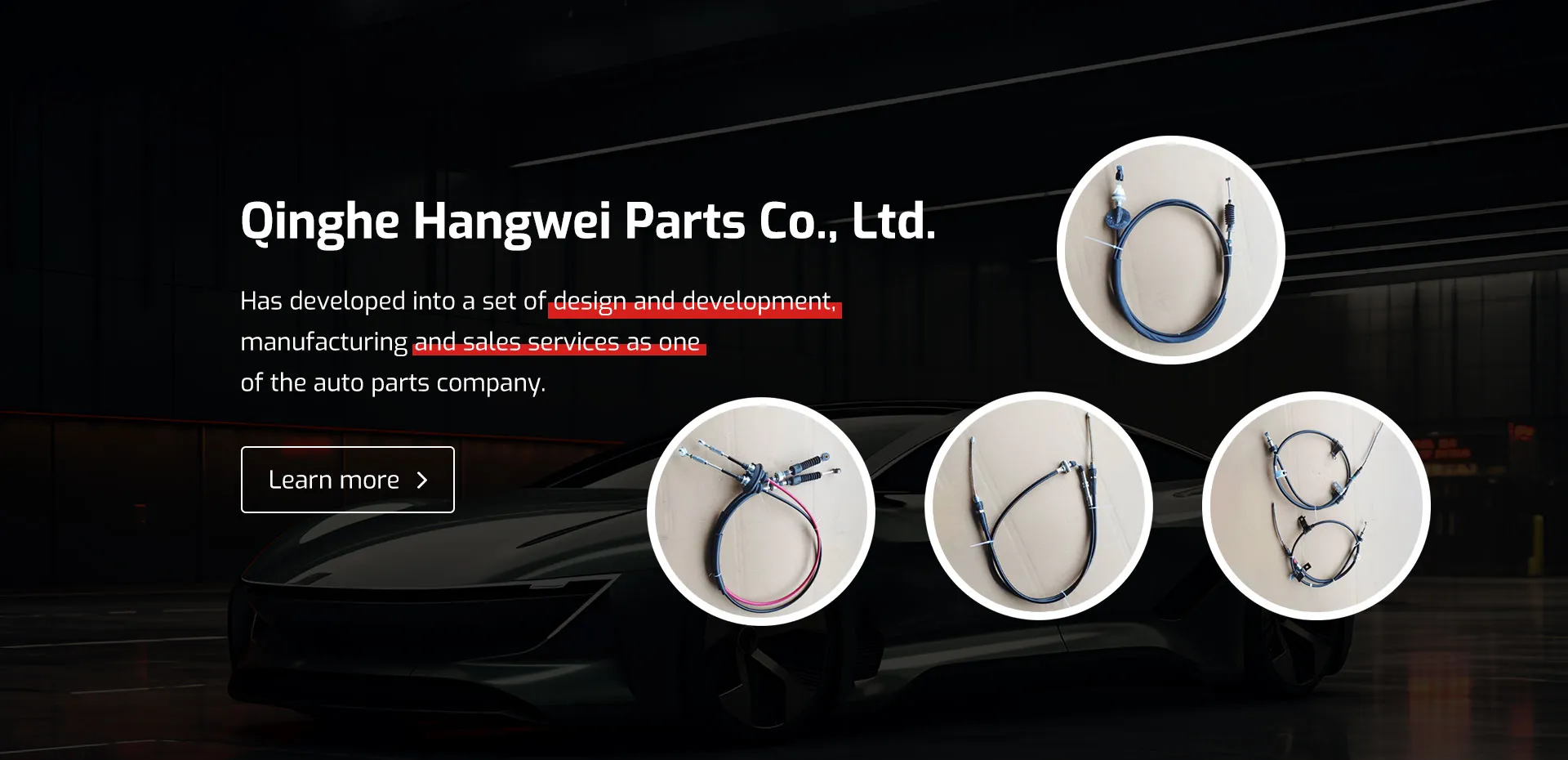cable hand brake
Understanding Cable Hand Brakes A Comprehensive Overview
Cable hand brakes play a crucial role in the safe operation of various vehicles, especially in the realm of bicycles, motorcycles, and automotive applications. These braking systems utilize a cable mechanism to engage and disengage braking force, providing precise control and reliability when needed. This article delves into the working principles, applications, maintenance tips, and advantages of cable hand brakes.
The Mechanics of Cable Hand Brakes
At its core, a cable hand brake consists of a lever, a cable, and a brake assembly. When the user pulls the lever, the cable attached to the lever is pulled taut, transmitting the force to the brake mechanism. This action typically engages brake pads or shoes that press against the wheels or rotor, creating friction that slows down or stops the vehicle.
The simplicity of design is one of the strengths of cable hand brakes. Unlike hydraulic brakes, which require fluid pressure to operate, cable brakes rely on mechanical tension. This makes them lighter and often easier to repair or replace, as they don’t require specialized skills or tools beyond basic hand tools.
Common Applications
Cable hand brakes are widely used in several types of vehicles
1. Bicycles Most bicycles are equipped with cable hand brakes, particularly in entry-level models and many mountain bikes. The cable system allows for effective stopping with minimal force from the rider. Cable brakes on bicycles include rim brakes and some types of disc brakes.
2. Motorcycles In motorcycles, cable hand brakes are used in both front and rear braking systems. Although many modern motorcycles are shifting toward hydraulic systems for improved performance, cable brakes are still prevalent in smaller bikes and scooters, where simplicity and cost are concerns.
3. Automobiles While most modern cars now use hydraulic systems, cable hand brake systems are ensured in the parking brake mechanisms of many vehicles. When engaged, these systems lock the rear wheels, preventing movement when parked.
Advantages of Cable Hand Brakes
Cable hand brakes come with a host of advantages which contribute to their prevalence
cable hand brake

- Simplicity The mechanical design of cable hand brakes results in a straightforward system that can be easily understood and maintained. This simplicity ensures that more users can manage basic repairs or adjustments without needing technical expertise.
- Weight and Cost Efficiency Cable systems are generally lighter and less costly compared to hydraulic braking systems. For manufacturers, this means lower production costs and for consumers, it means cheaper repairs and replacements.
- Responsive Feel Many riders and drivers appreciate the direct feel of cable brakes. The immediate response when pulling the lever provides a sense of control, which is particularly important in sports and recreational vehicles.
Maintenance of Cable Hand Brakes
To ensure optimal performance and longevity of cable hand brakes, regular maintenance is essential. Here are some key maintenance tips
1. Inspect Cable Condition Over time, cables can fray or corrode, reducing their effectiveness. Regularly inspect the cables for signs of wear and replace them as needed.
2. Adjusting Tension The brake lever should engage comfortably without requiring excessive force. If the cable stretches, it may need to be adjusted to ensure proper tension and responsiveness.
3. Lubrication Keep moving parts, such as the cable housing and lever pivot points, lubricated to minimize wear and friction. This will keep the system operating smoothly.
4. Brake Pad Inspection Regularly check the condition of brake pads or shoes for wear. Replacing them promptly prevents further damage to the braking system and ensures safety.
Conclusion
Cable hand brakes are a reliable, simple, and effective braking solution for a variety of vehicles. They stand out in applications where weight, cost, and ease of use matter. Understanding their mechanics, maintenance needs, and advantages can greatly enhance both performance and safety for users. Whether you’re riding a bicycle down a steep hill or securing a parked vehicle, trusting in the function of a well-maintained cable hand brake can provide peace of mind on the road or trail. As technology continues to evolve, the fundamental principles behind cable hand brakes ensure they remain an enduring choice in the world of vehicular braking systems.
-
Workings of Clutch Pipe and Hose SystemsNewsJun.04,2025
-
The Inner Workings of Hand Brake Cable SystemsNewsJun.04,2025
-
The Secrets of Throttle and Accelerator CablesNewsJun.04,2025
-
The Hidden Lifeline of Your Transmission Gear Shift CablesNewsJun.04,2025
-
Demystifying Gear Cables and Shift LinkagesNewsJun.04,2025
-
Decoding Clutch Line Systems A Comprehensive GuideNewsJun.04,2025
